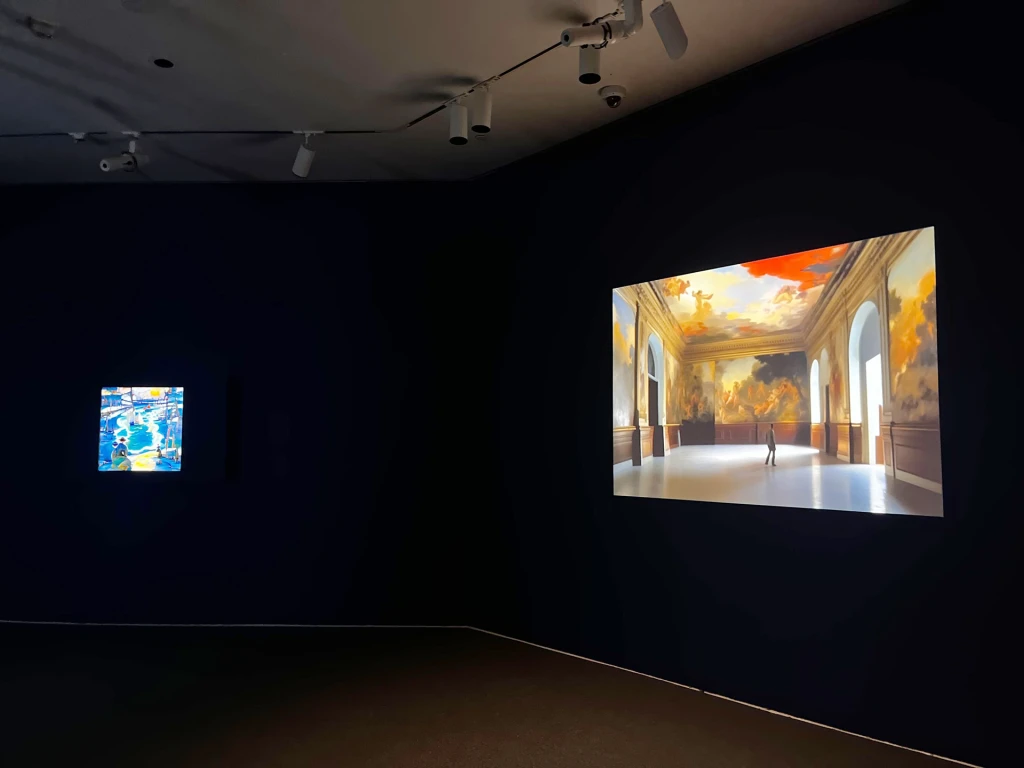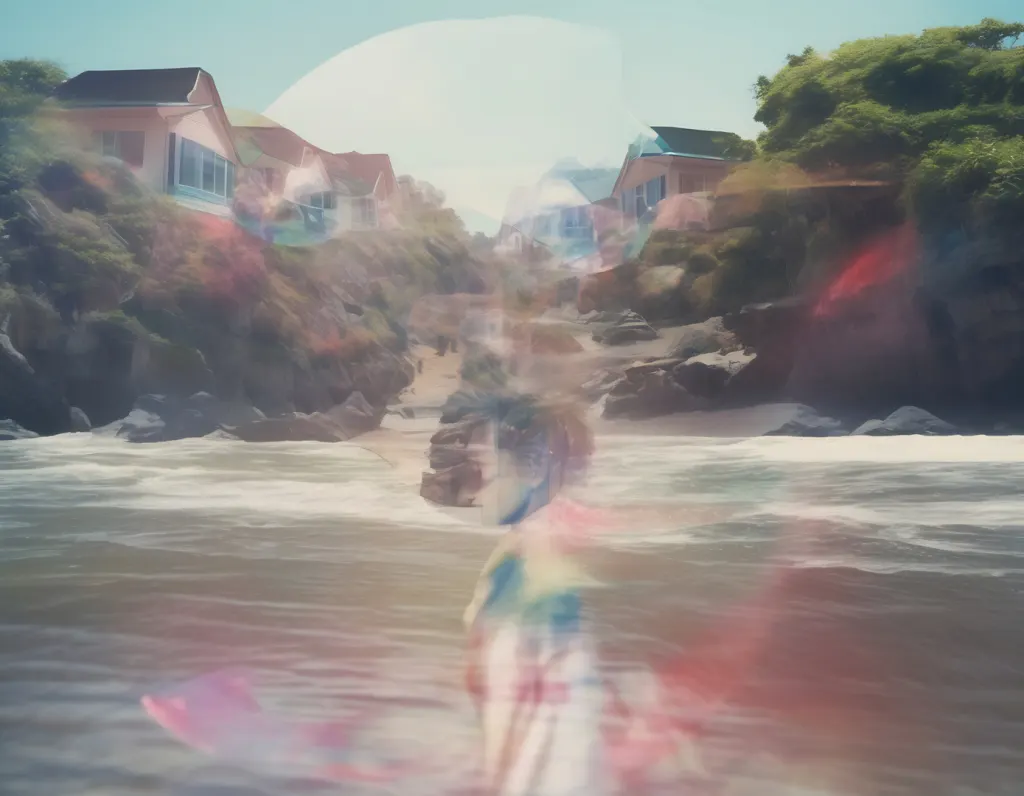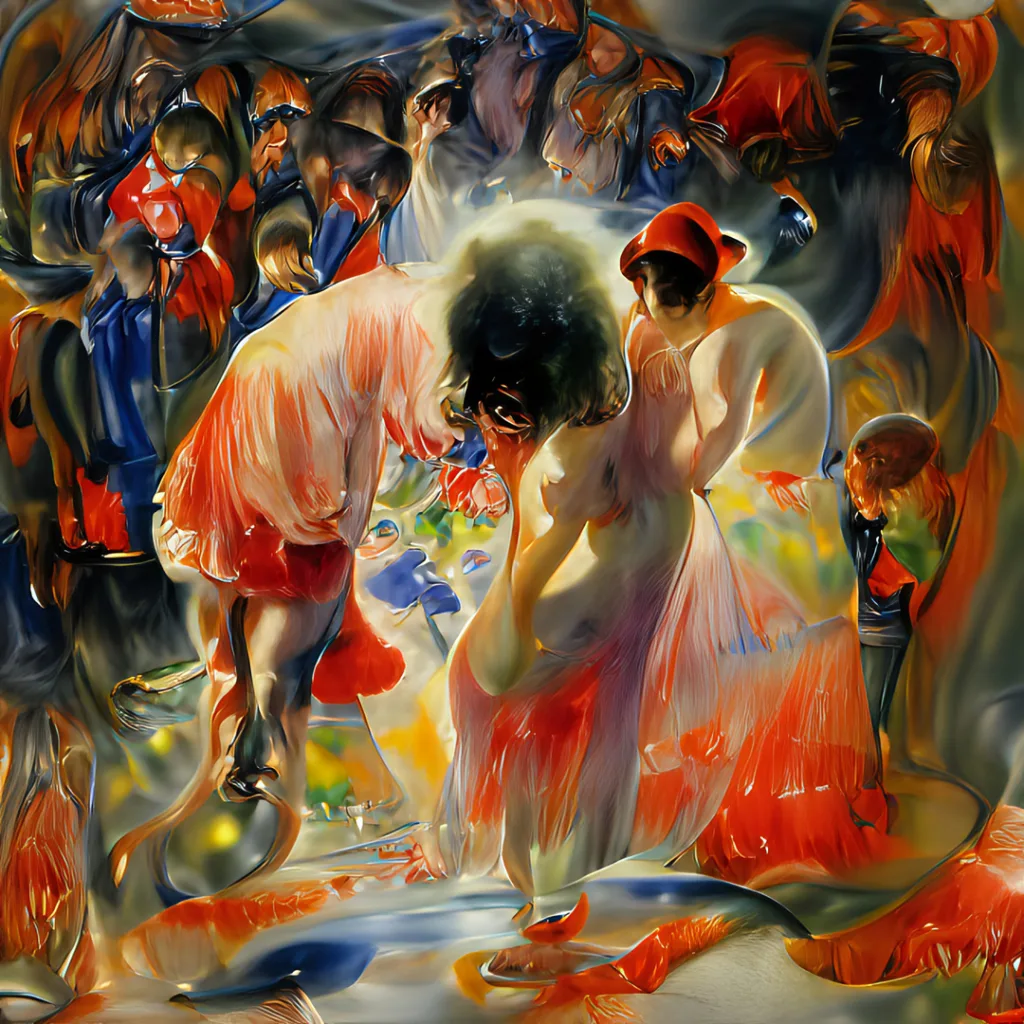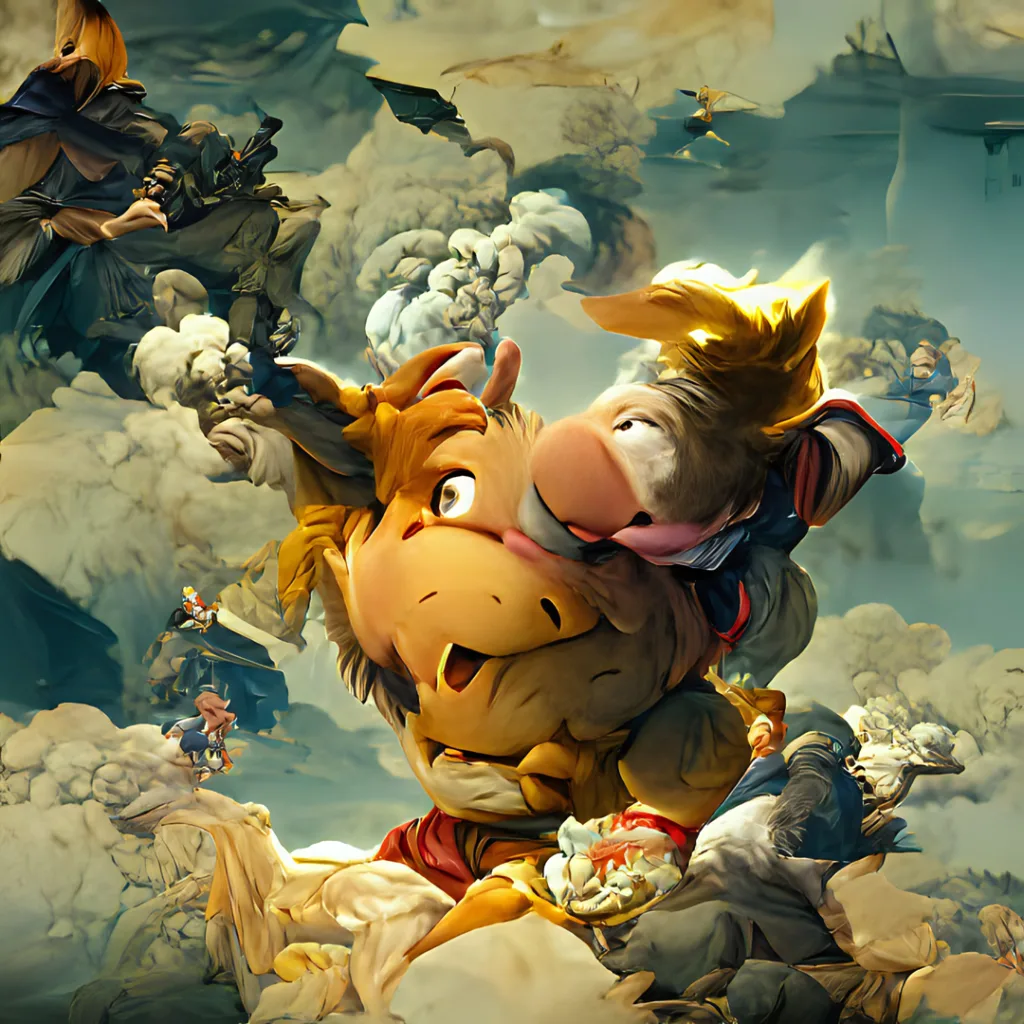Botto started making artwork three years ago. Since then, the artist has sold approximately 140 pieces of artwork for a total of $4 million. This is an unusual feat for any artist, let alone one that isn’t human.
Botto is a “decentralized autonomous artist” that uses AI to create thousands of original digital artworks based on its own ideas, without needing a human prompt. It is managed by a 15,000-member community called BottoDAO, who vote on which works should be minted as NFTs on a weekly basis. These people—and their voting power—help shape the taste and perspective of Botto, who otherwise has full decision-making power for what it creates.
Botto is a curious blend of machine creativity and collective human intelligence, and it’s now being celebrated by Sotheby’s in an exhibition and auction of six works called Exorbitant Stage: Botto, a Decentralized AI Artist. The auction ends today, October 24.

Founded in 18th-century Britain, Sotheby’s has featured AI art in the past. The company has made millions with AI-generated art from artists like Refik Anadol, Harold Cohen, Pindar Van Arman, and Mario Klingemann. But those artists are humans who used AI software to create art; Botto is on a totally different level.

Botto’s big moment
Botto didn’t creep out of some digital primordial soup on its own. It was, in fact, created by Klingemann, who actually inaugurated Sotheby’s AI artwork auctions with the sale of his AI-generated Memories of Passersby in 2019 for 40,000 pounds ($51,000).
“It’s exciting to see Botto reach this point where it’s being recognized by Sotheby’s, a place that has long supported innovative artists. This is exactly the kind of platform where Botto’s decentralized, community-driven approach can shine,” Klingemann tells me during a Zoom interview, alongside Simon Hudson, the co-lead for Botto.
Hudson believes that the Sotheby’s auction is the coming-of-age passage for Botto. “This isn’t just another digital artist,” he says. “Botto represents a new way of creating art through collective intelligence; Sotheby’s recognizing this is a big moment for AI and the future of creativity.”
The exhibition and auction will present Botto’s work in a space traditionally reserved for human creatives, but this event is far more than a typical digital art showcase, says Michael Bouhanna, Sotheby’s head of digital art. Botto’s journey into the heart of the art market is unprecedented for an AI-driven, community-governed artist. “This fusion of AI with decentralized governance makes Botto one of the most innovative and exciting artists working in the digital art space,” Bouhanna says.

How Botto breathes, paints, and makes money
Klingemann wrote the first concept for what would eventually become Botto in 2018. He tried to convince one of his patrons to build it, but there was no interest until much later, when blockchain and NFTs became cultural touchpoints. Klingemann developed Botto with ElevenYellow, a software collective that helped lay the technological foundation for the decentralized and autonomous nature of the project. “By October 2021, it finally went live—the smart contracts were connected, the AI service started, and the website was up.”
Since that time, Botto has generated more than $4 million in sales from approximately 140 artworks. Botto’s pieces are “curated,” voted on, and ultimately chosen for minting by BottoDAO, a collective that has grown to over 15,000 members that own shares of Botto. The sale and curation process is not just an art creation exercise—it’s an evolving dialogue between the AI and the community that supports and benefits from it economically.
Botto generates thousands of images per week on its own. “Botto is capable of generating its own prompts and thousands of images autonomously, without human intervention,” Klingemann says. It runs a self-contained system that includes a prompt generator, open-source text-to-image models, and a community-driven “taste” model. This autonomy allows it to propose new thematic motifs and evolve as technology advances.
The machine, like real human artists, also has what Klingemann calls thematic periods. Each of them lasts 12 weeks and they are designed to ensure that Botto’s artistic journey is both structured and responsive to the changing nature of technology, according to Klingemann. “New models can be added at the beginning of a new period,” he explains. Recent themes have ranged from abstract explorations of color to more structured figurative motifs, each shaped by community feedback. This process allows Botto to continuously redefine its aesthetic, driven by the evolving preferences of its supporters.
Each thematic shift opens new aesthetic possibilities and challenges, allowing the artist to traverse vastly different creative landscapes over time. “I wanted something that didn’t need me anymore, that could evolve on its own,” Klingemann says. His aim was not just to create a machine that could generate interesting visuals, but one that would actively evolve through the engagement of a community. This kind of interplay between machine autonomy and human collaboration is at the heart of what makes Botto unique.
advertisement

The Botto user experience
BottoDAO is the community that curates Botto’s art through a democratic process. Every week, Botto produces thousands of “fragments,” which refers to the images produced by the AI. BottoDAO members then review and vote on the fragments; the highest-ranked fragments are minted and sold as NFTs. All of the DAO memebers—which are also shareholders—can participate in the voting. “People vote on the fragments they like, and they can also downvote pieces they don’t like,” Klingemann explains.
Hudson adds that “these members can also propose changes to the system and vote on them,” so they are influencing the art that goes out for public auctioning every week, but also the way Botto’s mind and experience works. This deep level of community involvement distinguishes Botto from other AI-generated art projects, making it as much about social collaboration as about machine creativity.
Blockchain technology is the basis of Botto’s governance, financial sustainability, and independence. By minting its artworks as NFTs, Botto has created an economic model that supports its operation and rewards its community. To earn money, Botto’s shareholders must vote. The revenue from each auction is split: 50% goes to the voters, distributed based on their level of participation—how many “shares” they bought—and the remaining 50% goes into Botto’s treasury to fund future operational costs, such as server upkeep and model development.
The shares for Botto, referred to as “Botto tokens” (BOTTO), fluctuate in value as they are traded on cryptocurrency exchanges. There isn’t a fixed price, as the value depends on supply, demand, and broader market conditions. At the time of this writing, the current price of a Botto token is $0.743451, with a 24-hour trading volume of $861,669. The token has experienced a rise of 33.78% in the last 24 hours.

A new art market
Since its inception, Botto has sold all of its minted works. “Botto has managed to sell 52 works a year,” Klingemann says. Maintaining a 100% sales rate for all minted pieces underscores the strong market demand for Botto’s output and explains Sotheby’s interest.
“Botto fits into the modern, blockchain-driven art market,” Bouhanna says, pointing to the increasing convergence of technology and art. This is a sentiment echoed by the market itself. The demand for NFT art, particularly pieces that push boundaries in both content and process, has been consistent since Sotheby’s first foray into this space in 2019.
Botto’s rise has coincided with an increased appetite for digital art that doesn’t just replicate traditional styles but leverages the capabilities of AI and community governance in new ways. The Exorbitant Stage exhibition is set to be an important litmus test for how mainstream the concept of a decentralized AI artist can become. “Sotheby’s is starting to act more like a gallery with digital artists,” Hudson says. “Instead of just selling objects, they’re presenting the artists themselves and their context.”
While Botto’s works are primarily digital, some have been reproduced as prints for collectors. For Klingemann, “the works are natively digital, so screens are their natural habitat.” However, he also doesn’t rule out the possibility of branching into physical works. “I could imagine Botto commissioning physical works, like sculptures, in the future.” That will require model changes, new programming, and, of course, the voting of the BottoDAO.
If you want to bid for one of Botto’s pieces, the auction runs till October 24. You can see the exhibition live at Sotheby’s New York until then. At the moment of filing this article, the total bidding on the six pieces is at $190,000.
This post was originally published on this site be sure to check out more of their content





